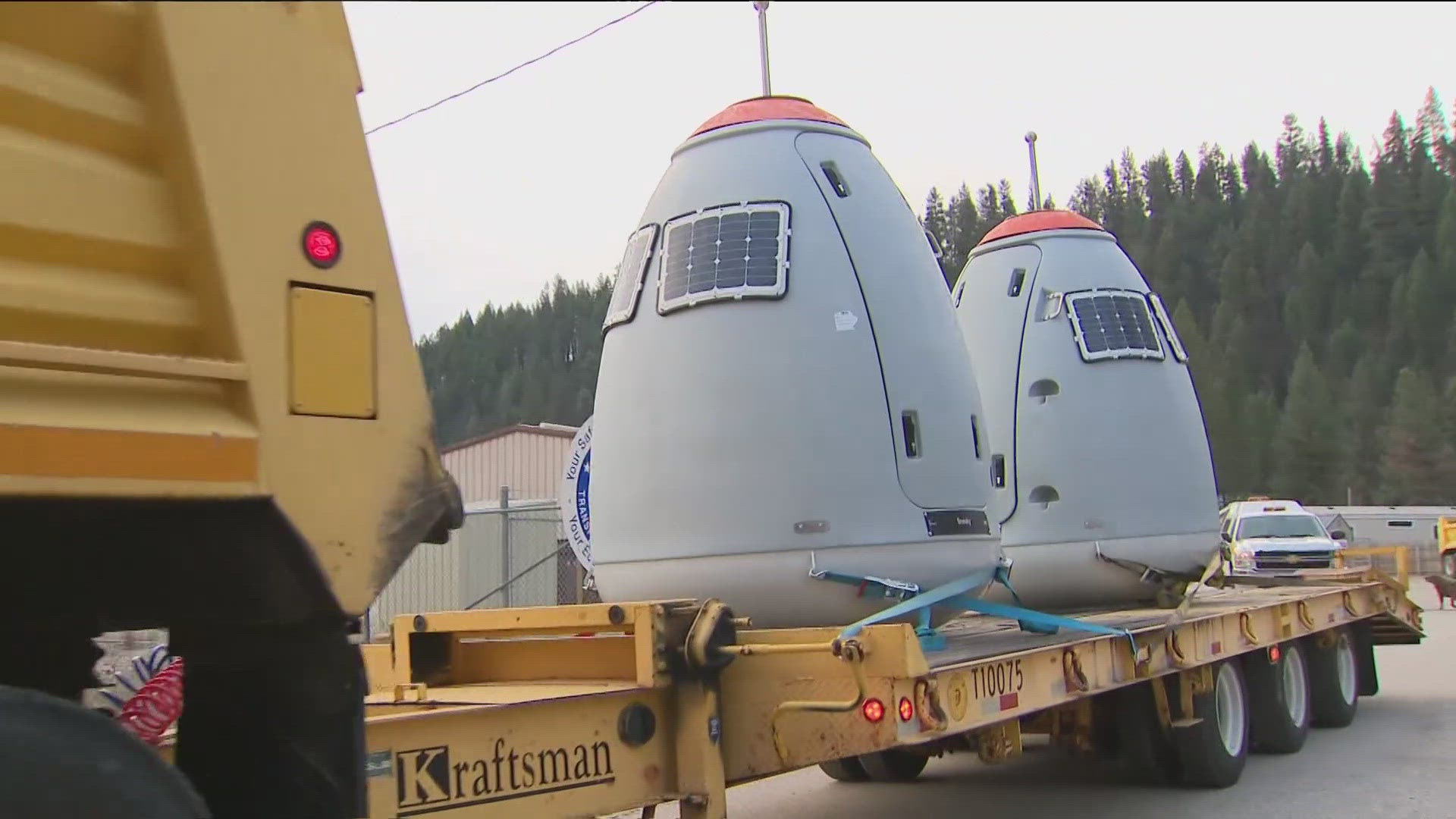BOISE, Idaho — Weaving through canyons, Highway 21 is a lifeline connecting Boise County to the Treasure Valley. When temperatures drop - and snow starts to fall - so do the chances of an 11-mile stretch of the highway staying open.
The section of highway between Grandjean and Banner Summit is often called "Avalanche Alley." The Idaho Transportation Department's Avalanche Team has been working year-after-year to monitor the snowpack and keep the highway open - making sure drivers can safely spend more time on the road.
The avalanche team is stationed in Lowman through the winter to monitor the ever-changing snowpack, and decide on when to close that section of the highway when necessary for safety.
"We are constantly evaluating the strength of the snowpack on the ground, which changes seasonally and changes daily based on temperatures, snowfall, cloud cover - all sorts of variables," avalanche team leader Bill Nicholson said. "By monitoring the strength of that snowpack on the ground, we come up with an idea of how much stress it can handle."
The 11-mile stretch of highway is dotted with about 70 avalanche paths, and is one of just three highways in the country that fall under the "Very High" category on the Avalanche Hazard Index, in addition to SH-210 in Utah and U.S. Highway 550 in Colorado.
"This highway is quite a big undertaking, because it's very sensitive, and there's not much runout for the paths," Nicholson said.
The team gets data from specialized weather reports and weather stations, and spends time on skis to look for instabilities throughout the canyon.
They also monitor slide paths with two Remote Avalanche Control Systems (RACS), also called "exploders" which are flown by helicopter every year to a spot near the summit where they are mounted for the season. The avalanche team fires the exploders remotely with a laptop, which creates an explosion equivalent to a 15-pound airblast.
"Explosives above the snowpack are more effective than explosives in the snowpack because the shockwave can travel further," Nicholson said. "So they're quite effective."
The team also tests the snowpack's strength with an 'Avalauncher' that fires a two-pound projectile into the snow with compressed nitrogen.
Since ITD's avalanche team was established in 2007, they've been able to keep traffic moving through Highway 21 more often. The number of days that stretch of highway is closed has averaged about 13 days per season, compared to 60 to 90 days in the past.
But this year brings a change to the canyon's landscape. Burn scars stain the scenery, a reminder of the Wapiti Fire that torched the region. The avalanche team used a helicopter to survey the area to see if the wildfire would have any major impacts.
"There's a big avalanche problem on this highway to begin with. So in the future, as those trees start to fall down it may create slopes that haven't avalanche in the past to start avalanching - but that takes a little while after the fire," Nicholson said. "Also, we already have this huge avalanche problem, so we'll be dealing with it in the same way we would have dealt with it before the fire. So it really doesn't change stuff hugely for the avalanche program."
The avalanche team tries to give about eight hours notice before closing the gates, however that can changed based on different variables.
During the winter, parking is not allowed inside the 11-mile stretch of Highway 21 from Grandjean to Banner Summit.

